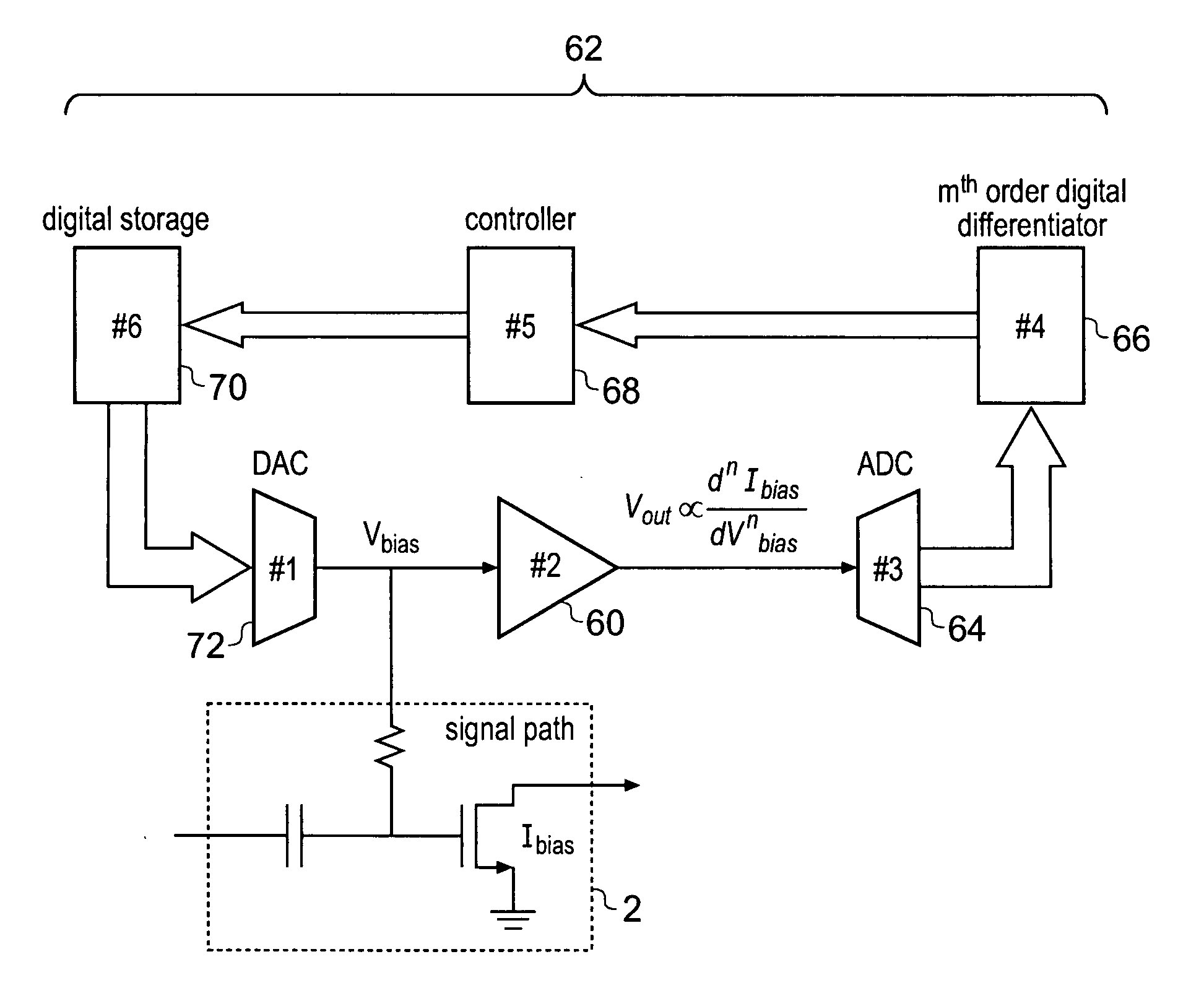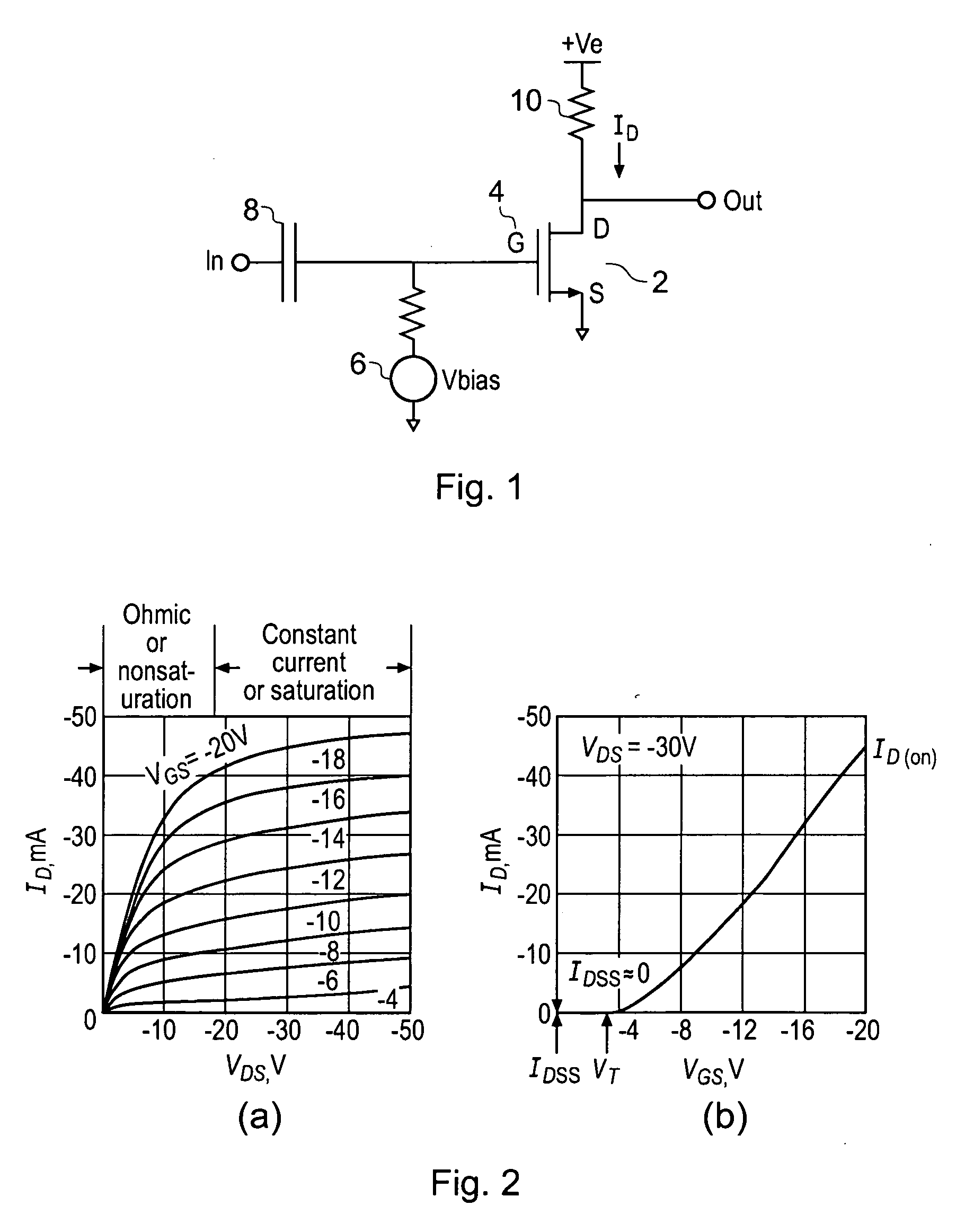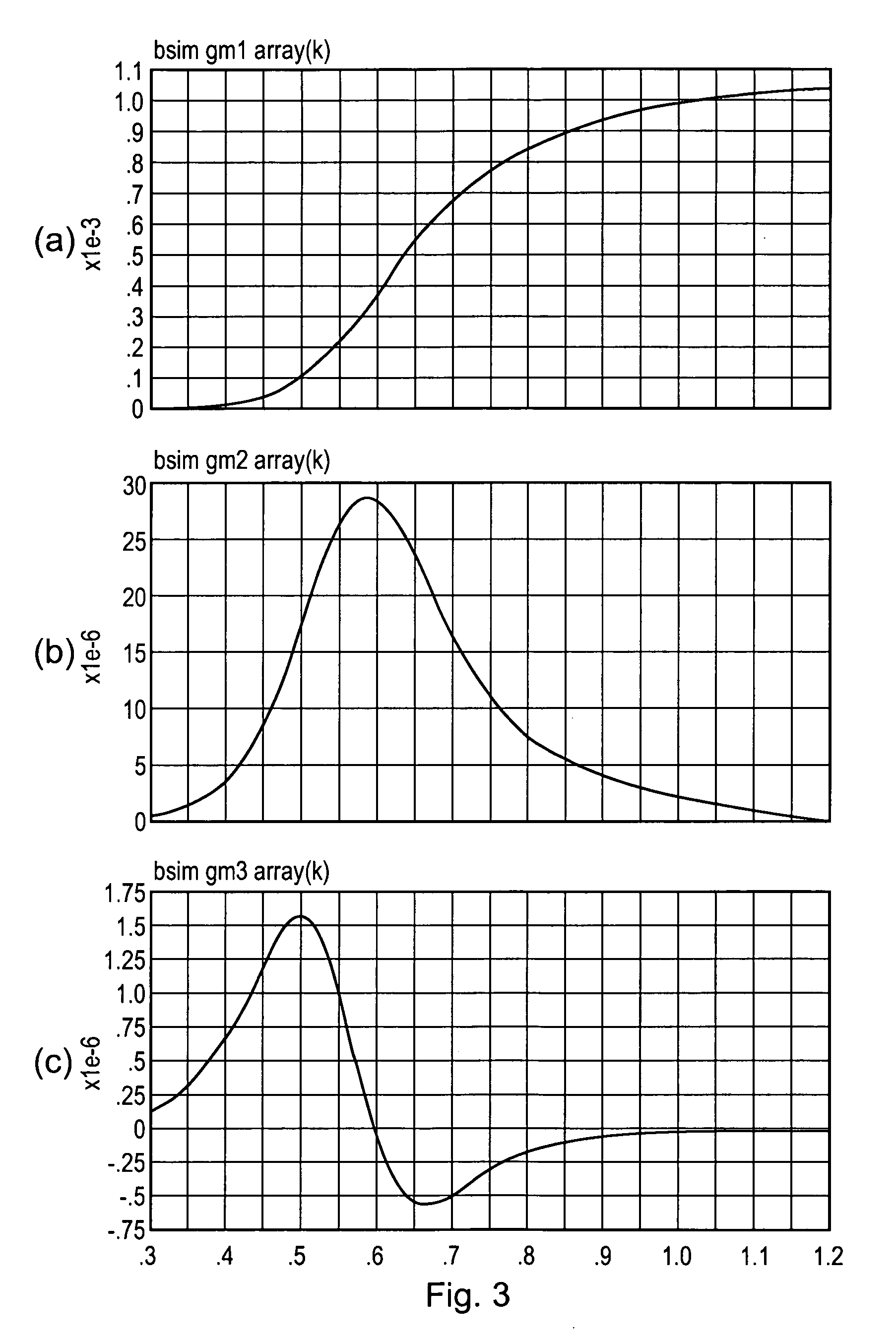Apparatus for and method of biasing a transistor
a transistor and apparatus technology, applied in the field of apparatus for and method of biasing transistors, can solve the problems of non-linearity of transistors, generation of harmonic components, transmissions outside of nominal transmission frequency bands having power levels, etc., to save power, reduce power requirements of circuits, and simplify the construction of analog measurement circuits
- Summary
- Abstract
- Description
- Claims
- Application Information
AI Technical Summary
Benefits of technology
Problems solved by technology
Method used
Image
Examples
Embodiment Construction
[0064]FIG. 6 schematically illustrates an embodiment of the present invention which is arranged to provide a bias voltage for the transistor amplifier 2. Given that the amplifier 2 will be in use a test circuit 60 is provided which models or replicates an aspect of the performance of the amplifier 2. Therefore, if it is desired to minimise the third harmonic distortion by biasing the transistor to the point where a third derivative, i.e. Gm3, is zero then the test circuit 60 may be fabricated to mirror the transistor amplifier circuit itself or may include a derivative calculating circuit adapted to form a derivative lower than the third order, for example the first order or second derivative. An example of a circuit for calculating a second order derivative is shown in FIG. 7 and will be discussed more fully later.
[0065] An output of the test circuit is provided as an analog input to a digital control system, generally designated 62, and comprising an analog to digital converter 6...
PUM
 Login to View More
Login to View More Abstract
Description
Claims
Application Information
 Login to View More
Login to View More - R&D
- Intellectual Property
- Life Sciences
- Materials
- Tech Scout
- Unparalleled Data Quality
- Higher Quality Content
- 60% Fewer Hallucinations
Browse by: Latest US Patents, China's latest patents, Technical Efficacy Thesaurus, Application Domain, Technology Topic, Popular Technical Reports.
© 2025 PatSnap. All rights reserved.Legal|Privacy policy|Modern Slavery Act Transparency Statement|Sitemap|About US| Contact US: help@patsnap.com



